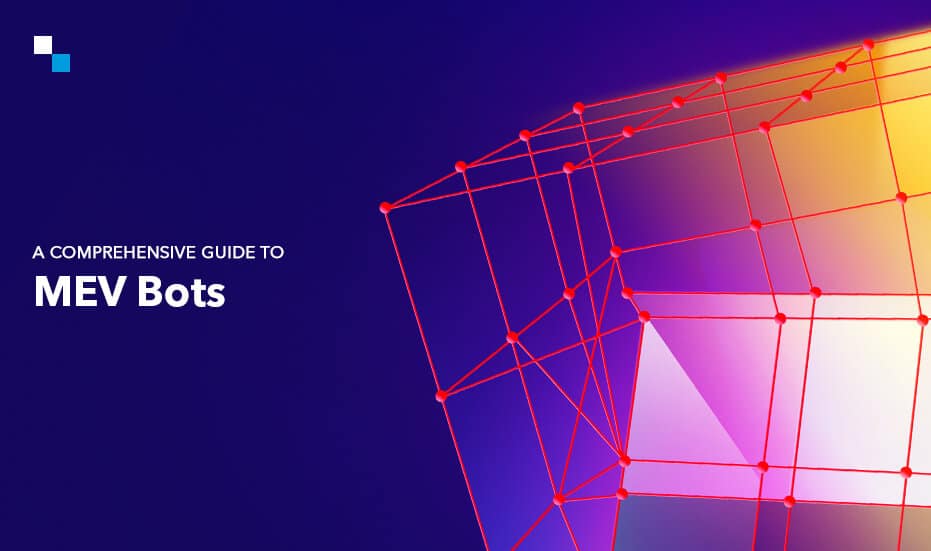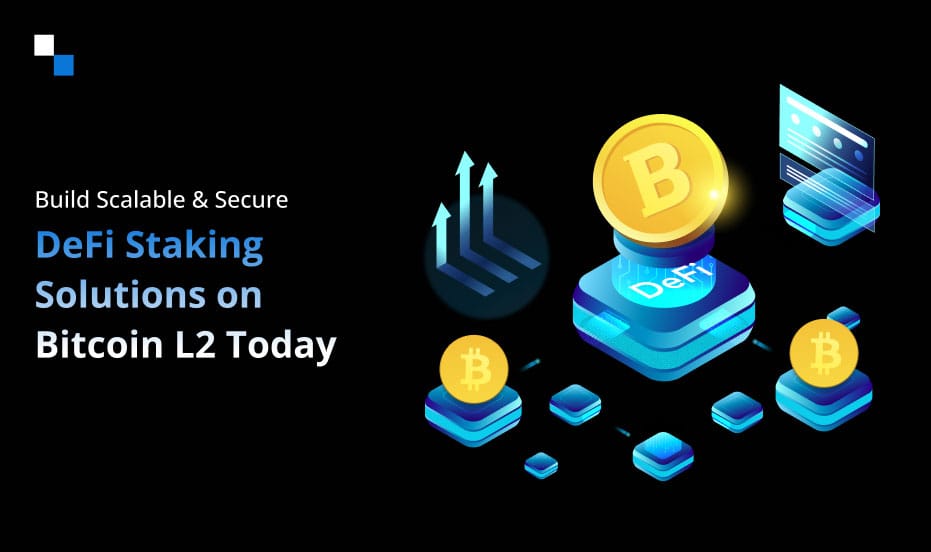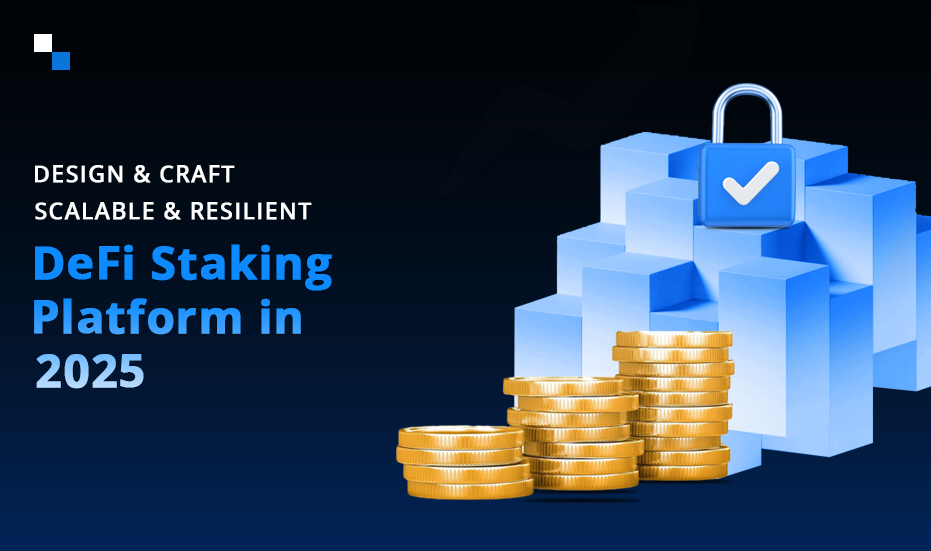
Balancing Budget & Speed: How Much Does It Cost to Develop a BRC20 Wallet?
April 5, 2024
Zero-Knowledge Encryption: A Beginner’s Guide to Understanding the Hype
April 8, 2024Maximal Extractable Value (MEV) bots are advanced tools engineered to strategically manage transaction order, unlocking significant profit opportunities for miners, validators, and other network participants. MEV represents the total profit attainable by controlling transaction inclusions in blocks, presenting both lucrative prospects for increased income and potential challenges related to network security, fairness, and stability.
Types of MEV Bots
MEV bot development differs from bot to bot as not all MEV bots are created equal. Let’s delve into the different types of MEV bots and the specific strategies they employ to extract Maximal Extractable Value.
Arbitrage Bot
An arbitrage bot, also known as an arbitrage trading bot, is sophisticated software designed to automatically detect and exploit price differences for the same asset across multiple markets. Its operational process includes:
- Market Monitoring: Continuously scanning exchanges for price variations.
- Price Comparison: Evaluating asset prices to identify arbitrage opportunities.
- Decision-making: Recognizing profitable chances and executing buy-sell orders.
- Execution: Swiftly executing orders to capitalize on price gaps.
- Profit Generation: Calculating profits from price variances after deducting fees.
Arbitrage bots play a crucial role in capitalizing on market inefficiencies and maximizing trading gains within dynamic financial ecosystems, that’s one of the main reasons why arbitrage MEV bot development is quite popular.
Sandwich Attack Bot
The Sandwich Attack Bot specializes in leveraging the Sandwich Attack strategy, a method of extracting Maximal Extractable Value (MEV) by exploiting the slippage tolerance of a target transaction. This technique, named for its layered approach, involves strategically placing two transactions around the target transaction within a block. The first transaction, known as frontrunning, creates a volatile environment that benefits the subsequent transaction, called back running, resulting in profitable opportunities.
Common Sandwich Attack Strategies:
Add Liquidity Sniping:
Exploiting transactions that add liquidity to Decentralized Exchanges (DEXs), this attack involves placing buy orders slightly above incoming liquidity prices. The resulting price spike allows the attacker to sell holdings at a profit, especially when monitoring DEX activities for specific token pairs.
Flash Loan Oracle Manipulation:
Leveraging flash loans to manipulate Oracle price feeds, attackers temporarily inflate or deflate asset prices. This manipulation creates arbitrage opportunities or influences smart contract behavior, exploiting market dynamics for gains.
Time Bandit Attack:
Exploiting block confirmation times, this attack identifies large swap transactions in the mempool. By strategically placing a smaller transaction before the original swap within the same block, the attacker manipulates execution order, capitalizing on price differentials.
Pump and Dump Attack:
Monitoring MEV pools for add liquidity transactions or pre-series buying transactions, this attack capitalizes on price movements. By strategically placing sell orders after price inflation, the attacker maximizes gains during market fluctuations.
The Sandwich Attack Bot employs sophisticated algorithms and real-time monitoring to execute these strategies with precision, offering a strategic advantage in navigating complex DeFi environments.
Sniper Bots
The Sniper Bot is meticulously crafted to execute precision trades, leveraging preset criteria to capitalize on short-term market movements. It operates by establishing specific entry and exit points based on technical analysis indicators such as moving averages, RSI, MACD, among others. When market conditions align with predefined criteria, the Sniper Bot swiftly and accurately executes trades, providing users with a competitive edge in trading environments.
How it Works:
Market Analysis:
The Sniper Bot continuously analyzes market data and technical indicators, monitoring trends like moving averages, RSI, MACD, etc. If these indicators converge to indicate a bullish or bearish trend as determined by the administrator, the Sniper Bot identifies potential trading opportunities.
Trade Initiation:
Upon detecting a bullish or bearish signal, the Sniper Bot enters a trade by placing a buy or sell order for the asset at a specified price point. Its objective is to enter the trade at an optimal time to capitalize on anticipated price movements.
Profit and Risk Management:
After initiating the trade, the Sniper Bot sets predetermined profit targets and stop-loss levels as specified by the administrator. The profit target represents the desired price level to exit the trade and realize profits, while the stop-loss level acts as a safety net to limit losses if the market moves unfavorably.
Trade Execution:
When the asset’s price reaches either the profit target or stop-loss level, the Sniper Bot triggers a buy or sell order to close the trade. Achieving the profit target prompts the bot to secure profits, while hitting the stop-loss level prompts it to minimize losses and mitigate risk.
The Sniper Bot’s ability to execute trades with precision, coupled with robust risk management strategies, empowers traders to navigate market fluctuations effectively and optimize trading outcomes.
Features of MEV Bots

Here’s a breakdown of some key features that equip MEV bots for their tasks:
Transaction Monitoring and Analysis:
- Mempool Watchdog: MEV bots constantly scan the mempool, analyzing pending transactions for potential MEV opportunities. They can identify high-value transactions, arbitrage opportunities, and liquidation events.
- Transaction Prioritization: Based on their analysis, MEV bots can prioritize transactions that align with their chosen MEV strategy. This might involve selecting transactions with high gas fees or those triggering specific market reactions.
Strategic Transaction Execution:
- Flash Loan Integration: Some MEV bots can leverage flash loans, a temporary loan where borrowed funds must be repaid within the same block. This allows them to execute complex arbitrage strategies or manipulate prices within a single block.
- Gas Price Bidding: MEV bots can strategically adjust gas prices for their transactions. They might increase gas prices for high-impact transactions to ensure faster inclusion or employ minimal gas fees for lower-priority transactions.
- Reordering and Restructuring: In some cases, MEV bots can reorder or restructure transactions within a block to achieve their desired outcome. This might involve inserting their own transactions before or after a high-impact transaction to capitalize on price movements.
Advanced Functionality:
- Arbitrage Detection: MEV bots can identify price discrepancies across different DEXes and execute arbitrage trades through flash loans or other techniques to capture profit from these inefficiencies.
- Liquidation Automation: Some bots can monitor loan positions on lending protocols and automate the liquidation process when a borrower’s collateral falls below a certain threshold. This allows them to capture a portion of the liquidated asset at a discounted price.
- Search and Relay Functionality: These bots act as intermediaries, connecting miners with MEV opportunities and facilitating MEV extraction strategies for a fee. They don’t directly manipulate transactions but act as a bridge between miners and those seeking to exploit MEV.
Additional Features:
- Customization Options: Some MEV bots offer users the ability to customize their strategies based on risk tolerance and desired profit levels.
- Performance Tracking: Advanced bots provide users with performance metrics and analytics to track the effectiveness of their MEV extraction strategies.
- Security Measures: Reputable MEV bots incorporate security features to protect user funds and private information. This might include secure communication protocols and user authentication mechanisms.
How Can You Make Money with MEV Bot?
MEV bots are like algorithmic ninjas in the cryptocurrency jungle, silently scanning for opportunities to exploit inefficiencies and generate profit. But before you jump on the MEV bot bandwagon, understanding how they work and the associated risks is crucial. Here’s a deep dive into the world of MEV bots and how they can potentially make you money:
MEV bots thrive on inefficiencies within the blockchain ecosystem, particularly within the mempool (the pool of pending transactions waiting for inclusion in a block). They leverage these inefficiencies through various strategies:
- Arbitrage Magic: MEV arbitrage bots act as automated arbitrageurs, constantly monitoring price discrepancies across different cryptocurrency exchanges. When a price difference is identified (e.g., asset X is cheaper on Exchange A compared to Exchange B), the bot can execute a quick buy order on Exchange A and a sell order on Exchange B, pocketing the profit from the price gap. Flash loans, a DeFi innovation that allows for temporary borrowing within a single block, can further amplify these arbitrage opportunities for advanced bots.
- Liquidation Bonanza: MEV bots can keep a watchful eye on lending protocols where users borrow crypto assets by putting up collateral. If a borrower’s collateral value falls below a certain threshold (indicating potential default), the bot can automate the liquidation process. It involves buying the borrower’s discounted collateral at a fire-sale price, potentially generating significant profit.
- Flash Loan Manipulation: While complex and risky, some MEV bots utilize flash loans to manipulate oracles (data feeds) that provide crucial information to smart contracts. By temporarily inflating or deflating an asset’s price through a flash loan, the bot can exploit short-term price movements for arbitrage gains or influence smart contract behavior to its advantage.
Considerations Before Using MEV Bots:
- Risk and Complexity: While potentially profitable, MEV bots involve technical complexity and inherent risks. The cryptocurrency market is volatile, and strategies can backfire.
- MEV Bot Selection: Choosing a reputable developer is crucial. Look for bots with a proven track record, security features, and transparency in their operations.
- Understanding the Strategy: It’s essential to understand the specific MEV strategy employed by the bot and the associated risks. Don’t blindly invest in something you don’t comprehend.
- Regulation: The regulatory landscape surrounding MEV bots is evolving. Stay informed about potential regulations that might impact their use.
How to Build a MEV Bot?
Building an MEV bot is a complex undertaking that requires a strong foundation in blockchain technology, smart contract development, and a deep understanding of MEV strategies. Here’s a roadmap to guide you through the process, but be aware of the significant challenges involved:
1. Grasping the Fundamentals:
- Blockchain Technology: Thorough knowledge of blockchain concepts like consensus mechanisms, transaction validation, and mempool structure is essential.
- Smart Contract Development: You’ll need programming expertise in languages like Solidity to create the bot’s logic and interact with blockchain networks.
- MEV Strategies: Understanding various MEV strategies (arbitrage, liquidation, flash loan manipulation) is crucial to determine your bot’s functionality.
2. Planning and Design:
- Define Your Strategy: Choose the specific MEV strategy your bot will employ based on your risk tolerance and desired outcomes.
- Bot Architecture: Design the bot’s architecture, outlining components like mempool monitoring, transaction selection, and interaction with blockchain infrastructure.
- Security Considerations: Prioritize security from the beginning. Implement secure coding practices, access controls, and consider code audits by security experts.
3. Development Phase:
- Smart Contract Development: Write the smart contract code that governs the bot’s operations. Ensure the code is well-documented, efficient, and gas-optimized for cost-effectiveness.
- Integration with Blockchain Infrastructure: Connect your smart contract with the target blockchain network (e.g., Ethereum) to enable interaction with the mempool and transaction execution.
- Testing and Debugging: Rigorously test your bot in a test environment before deploying it on the mainnet. Identify and fix any bugs or vulnerabilities to minimize potential risks.
4. Deployment and Monitoring:
- Deployment: Deploy your bot’s smart contract to the chosen blockchain network after thorough testing. This process might involve transaction fees.
- Monitoring and Maintenance: MEV Bot development company continuously monitor your bot’s performance, track market conditions, and be prepared to adapt your strategies or update the bot’s code as needed.
Understanding MEV Boost and Share
MEV Boost and MEV Share are two sides of the same coin when it comes to dealing with Maximal Extractable Value (MEV) in the Ethereum blockchain. Here’s a breakdown of each:
MEV Boost:
Function:
- MEV Boost is a software tool developed by Flashbots that acts as a “sidecar” for Ethereum validator nodes.
Process:
- Validator nodes are responsible for proposing and validating blocks on the Ethereum blockchain.
- MEV Boost helps validators source blocks with higher potential MEV by connecting them with a network of builders (entities that create and optimize blocks for MEV extraction).
- Builders compete to submit MEV-optimized blocks to validators through MEV Boost, offering a share of the MEV profits as an incentive.
Benefits:
- For Validators: MEV Boost allows validators to potentially increase their rewards by including MEV-rich blocks without needing to identify them themselves.
- For the Network: MEV Boost can contribute to a more decentralized and secure network by encouraging validators to participate in MEV extraction, potentially reducing the dominance of large mining pools.
MEV Share:
Function:
- MEV Share is an extension of MEV Boost that focuses on fairer distribution of MEV captured by validators.
Process:
- Traditionally, MEV profits were primarily captured by validators and builders. MEV Share introduces a mechanism where a portion of the MEV captured through MEV Boost can be directed back to users whose transactions are included in the block.
- Users can choose to opt into MEV Share through tools like Flashbots Protect, which automatically routes their transactions through MEV Boost and allows them to reclaim a portion of the MEV generated by their transactions.
Final Words
In conclusion, MEV bots represent a groundbreaking advancement in blockchain technology, offering a strategic advantage to miners, validators, and traders in the crypto ecosystem. By strategically managing transaction order and exploiting market inefficiencies, MEV bots unlock significant profit opportunities.



